 |
 |
 |
| |
|
Development of an End-user Informed Tenofovir Alafenamide (TAF) Implant for Long-acting (LA)-HIV Pre-exposure Prophylaxis (PrEP)
|
| |
| |
HIVR4P Madird Oct 21-25 2018
Gregory J. Gatto1, Rhonda M. Brand2, Natalie Girouard1, Linying A. Li1, Leah Johnson1, Mark A. Marzinke3, Emily Krogstad4, Aaron Siegel5, Emily Helms5, Zach Demkovich4, Ellen Luecke4, Ariane van der Straten4 1RTI International, United States, 2University of Pittsburgh, United States, 3Johns Hopkins University, United States, 4Women's Global Health Imperative, RTI International, United States, 5Magee-Womens Research Institute, United States
Background: Implants promise systemic LA-HIV PrEP delivery while minimizing user burden. Our polycaprolactone (PCL) implant device was re-engineered to a more scalable design that is better aligned with the preferred attributes of a subdermal implant for HIV PrEP as expressed by both medical providers and end users. Here, we assessed the pharmacokinetics and safety of sustained TAF delivery through improved flexible rod-shaped reservoir implants.
Methods: Extruded PCL tubes (40 mm x 2.5 mm) were loaded with a slurry of TAF and castor oil. Ten female rabbits received two implants (one active and one placebo, or two active) subcutaneously inserted via trocar in the dorsal space. Identical TAF implants were concurrently evaluated in vitro. During the 63-d study, rabbits were sampled for plasma TAF/TFV and peripheral blood mononuclear cells (PBMCs) tenofovir-diphosphate (TFV-DP) weekly, and cervical and vaginal tissue TFV-DP on d63.
Results: In vitro TAF release from the implants demonstrated zero-order release kinetics with implants performing as designed, delivering 0.14±0.01 mg/d (low dose) and up to 0.72±0.01 mg/d (high dose). In vivo, PBMC TFV-DP levels of 443±529 fmol/106 and 1293±905 fmol/106 were sustained by the low dose and high doses, respectively. On d63, median vaginal and cervical tissue TFV-DP levels of 139 fmol/mg and 74 fmol/mg were achieved in the high dose group. The plasma TAF/TFV levels were maintained for the study duration. Minimal tissue reactivity at the insertion sites was noted. Residual drug analysis of the retrieved implants indicated similar in vivo and in vitro TAF release rates.
Conclusions: TAF device implants were effectively inserted with an approved trocar, well tolerated, and easily retrieved intact from rabbits after >60 days. All implants delivered TAF and maintained PBMC TFV-DP at putative protective concentrations for the study duration, suggesting our re-designed TAF implant device is suitable for continued development as a long-acting subdermal implant for HIV PrEP.
WEBCAST: http://webcasts.hivr4p.org/console/player/40468?mediaType=slideVideo&&crd_fl=1&ssmsrq=1541329944051&ctms=5000&csmsrq=1338
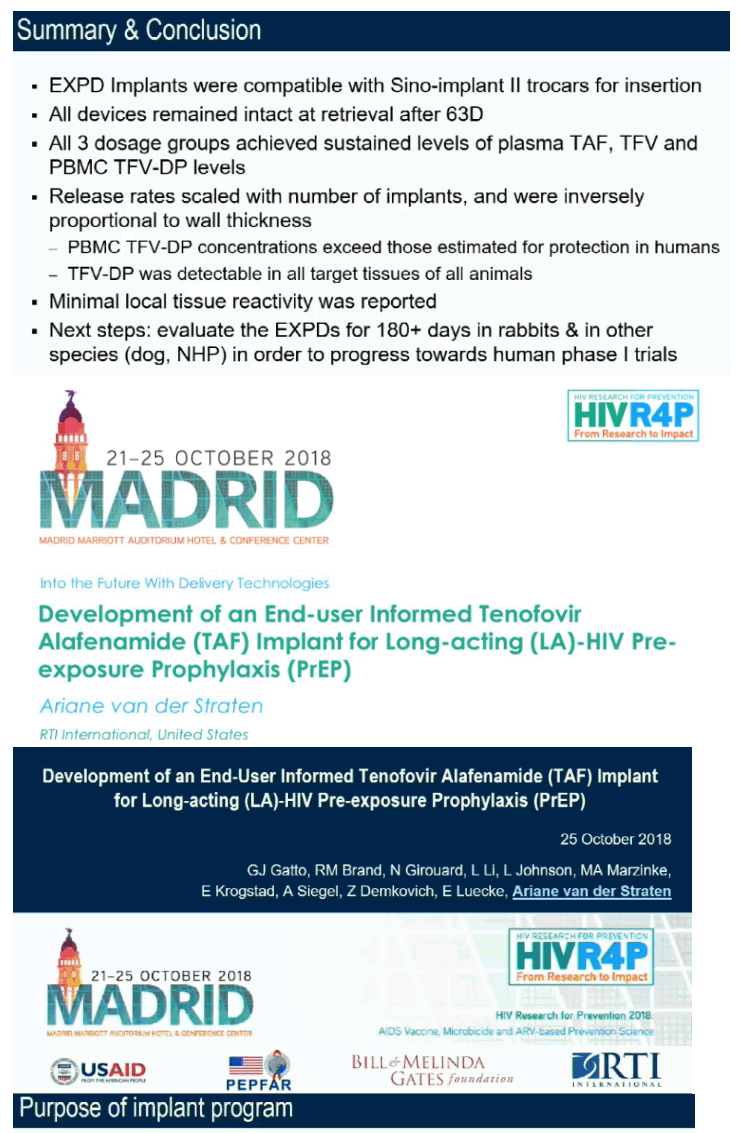
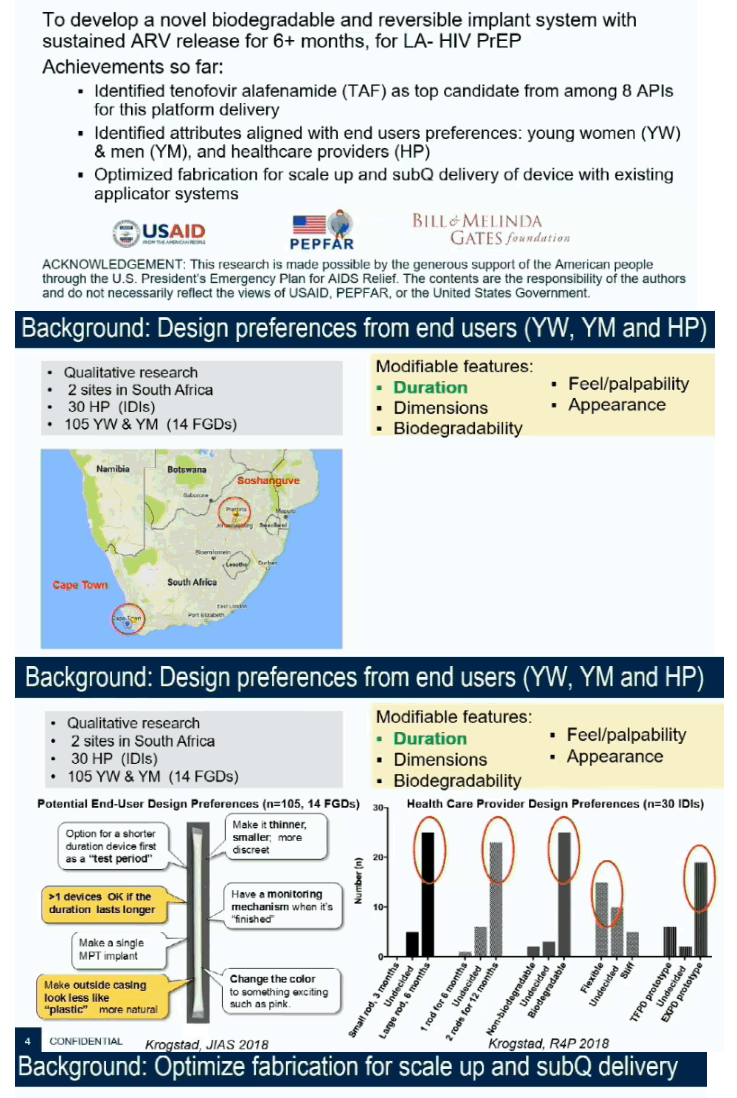
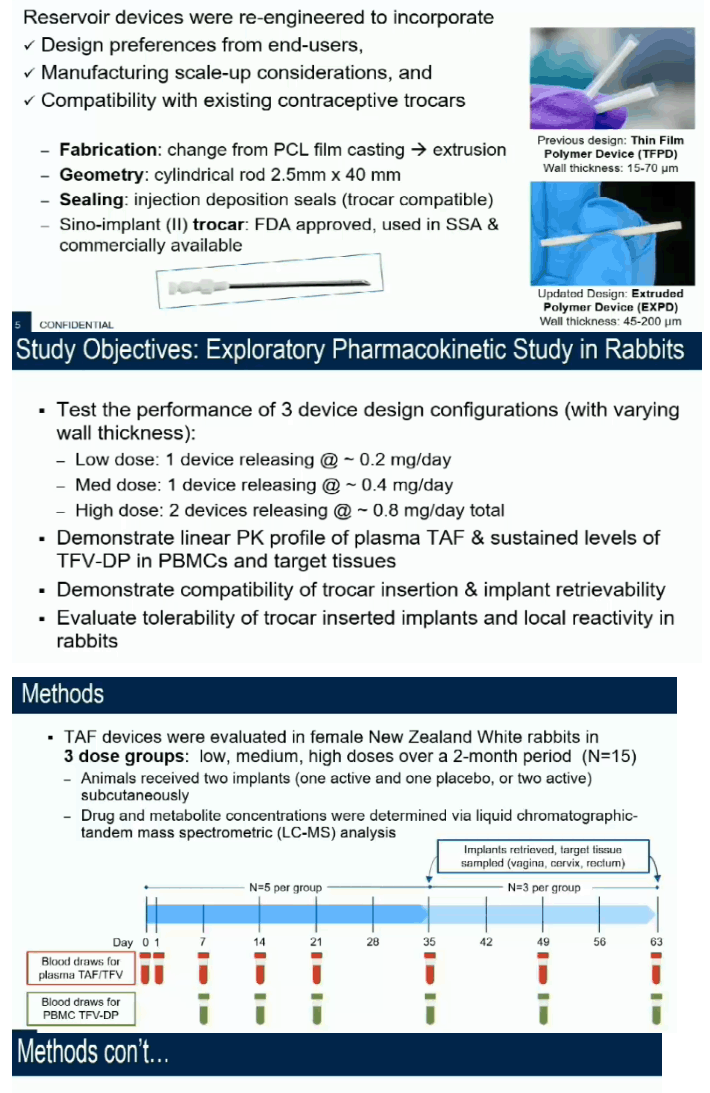
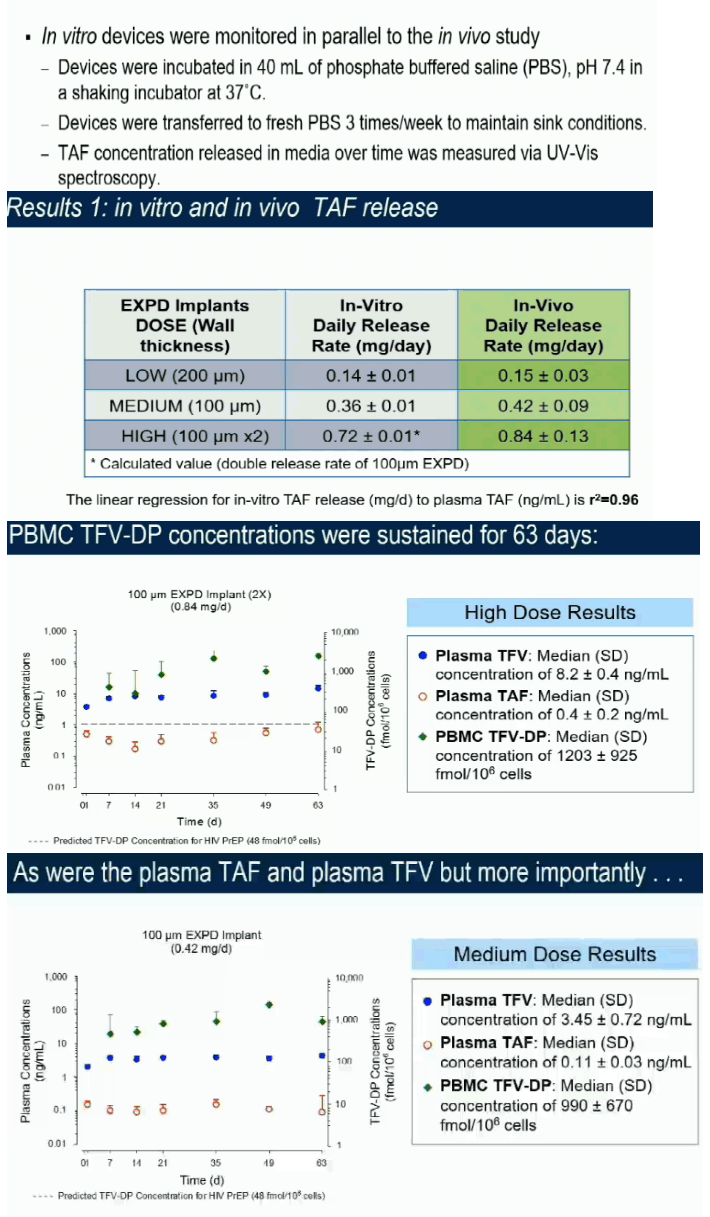
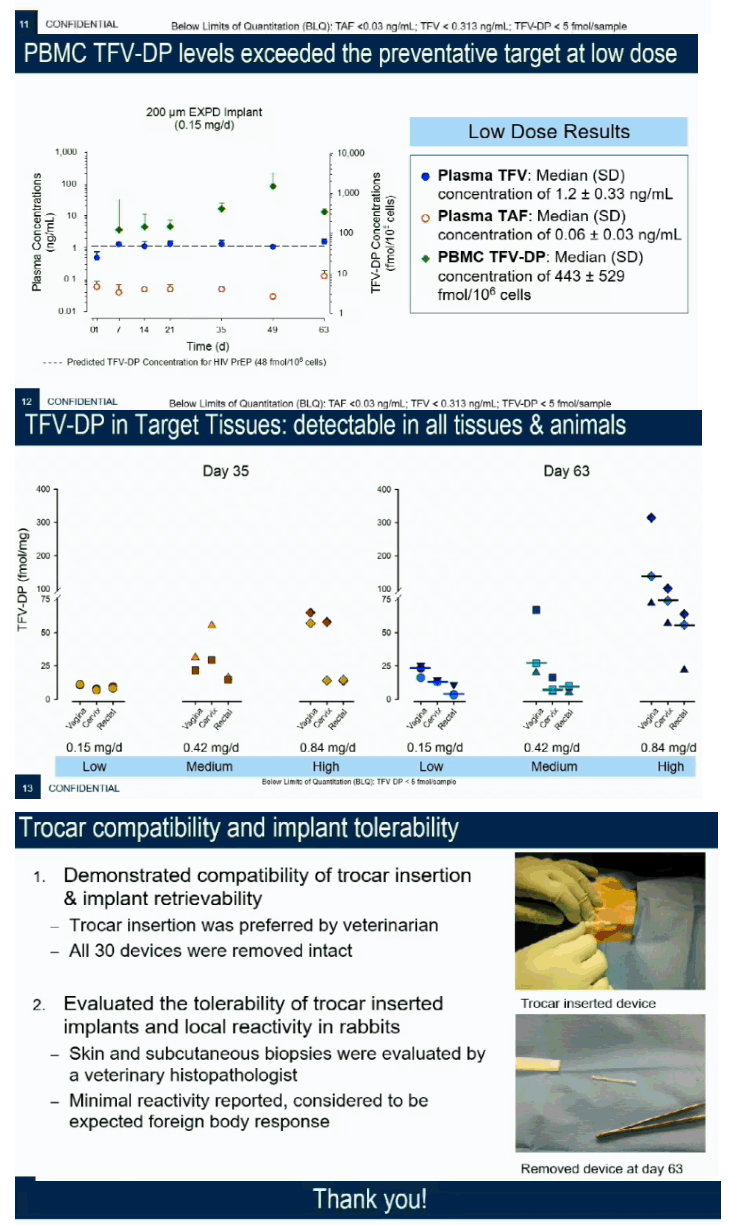
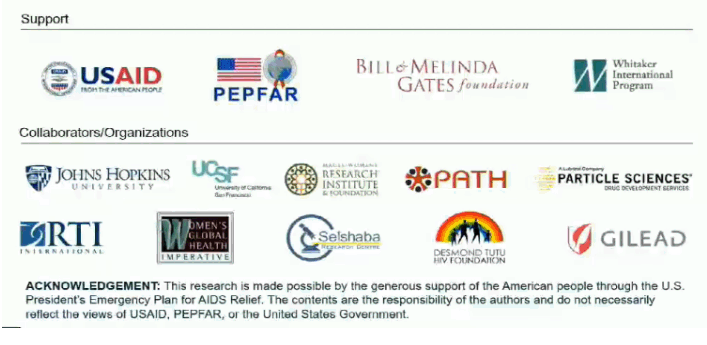
|
| |
|
 |
 |
|
|